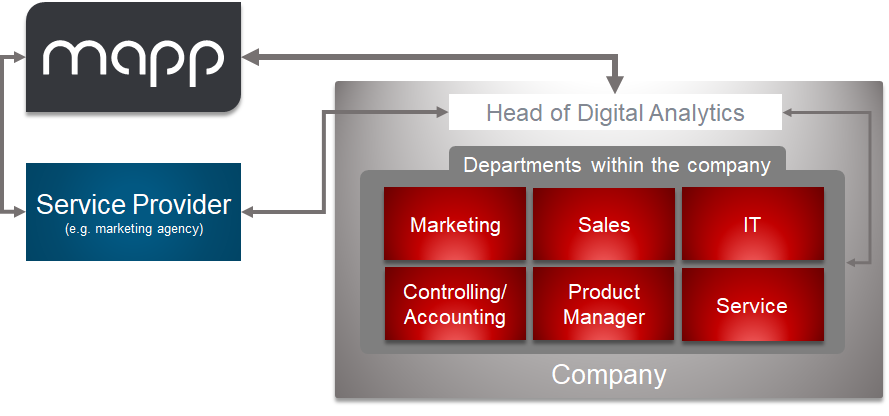Implementation 1 – Digital Analytics in Companies
This training chapter gives an overview of the recommended steps for the integration of Mapp Intelligence as well as tips for communication in companies.
1 Integration Phases
We differentiate between the following five phases:
- Conception and Implementation
- Understanding Mapp Intelligence
- Adjustments for working efficiently
- Go live
- Support in the daily business
First Phase: Conception/Implementation
This phase consists of: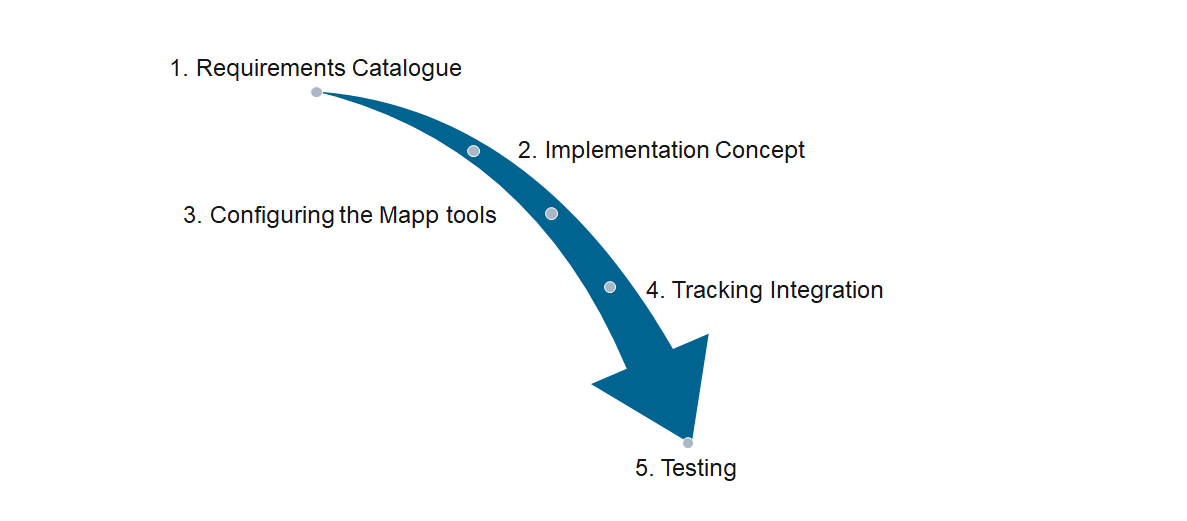
Requirements Catalogue
A catalog of requirements is defined as inter-divisionally within the company.
The following aspects have to be considered:
- Goals of the website (e.g. orders, newsletter registrations)
- KPIs: Which important key figures should be used in the reporting?
- Which things have to be measured? (E.g. marketing campaigns, number of internal search results, error messages)
| Express your requirements as questions, for example, „Which internal search phrases lead to product views?“. This makes it easier to recognize which information you want to combine. |
|---|
Implementation Concept
The implementation concept shows how the items defined in the list of requirements can be mapped in Mapp Intelligence.
The concept contains:
- All defined requirements
- All necessary parameters with example values
(e.g. „we use the item number as product name“) - Overview of parameters per page area
(e.g. „on the main page the following parameters are provided“) - Configuration of Mapp Intelligence
(e.g. TrackID, Track domain, Configuration of parameters and categories)
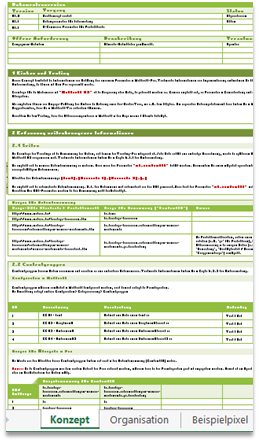
Configuration of the Mapp Tools
In Mapp Q3 individual elements are configured according to the implementation concept.
This includes custom parameters and categories.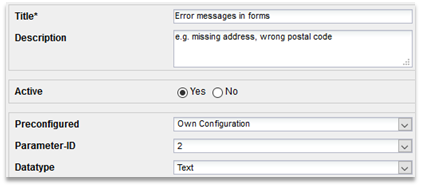
Tracking Integration
There are different variants of data collection for Mapp Intelligence.
Tracking with Tag Integration:
- A data layer is used to provide the data for Mapp.
- Depending on the application that should be measured (web site, app) a pixel or SDK is integrated.
- Mapp Tag Integration is configured.
Tracking without Tag Integration:
- An operational concept to assign values to the pixel parameter must be created.
- Depending on the application that should be measured (web site, app) a pixel or SDK is integrated.
Testing the Implementation
The implementation has to be tested extensively
- Onsite tests in the browser or an HTTP debugging proxy server:
The data sent to Mapp Intelligence can be checked. - Basic Test:
In Mapp Intelligence you can check whether the data is collected. - Extended Test to check validity:
e.g. Processes, Click Paths - Data Comparison:
e.g. with the internal DWH or CRM
The following training chapters provide further information:
- Mapp Intelligence Tracking Integration
- Training Chapter: Data Collection
- Training Chapter: Setup Options
- Training Chapter: Review of Data Collection
Second Phase: Understanding Mapp Intelligence
The basic questions are:
Which analyses do I need and which key figures are useful for me?

How does the user interface work?
The following things should be configured individually in Mapp Intelligence:
- Campaigns:

- Which Campaigns should be tracked?
- Do you want to use the Google AdWords API?
- Which attribution models do you need?
- Depths of engagement:
Where do we lose users on the way to attaining a website goal? - Processes:
Show exists on important paths (e.g. checkout, registration)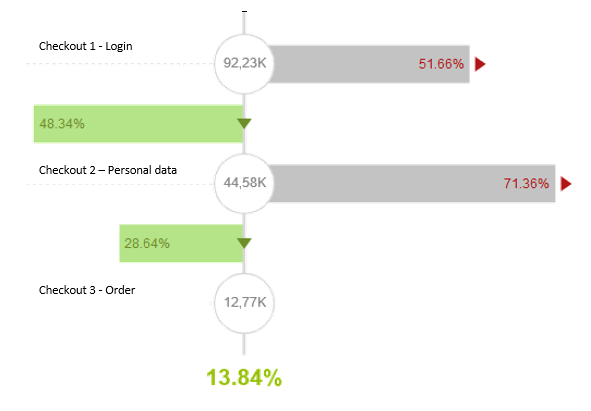
- Creation of custom figures and segments:
Allow for easy analysis and minimize mistakes when filtering
The following documents provide further information:
- Training Chapter: Campaign Analyses
- Training Chapter: Campaign Configuration
- Training Chapter: Referrer Analyses
- Training Chapter: Analysis of Navigation Paths
- Training Chapter: Analysis of Goal Achievement
- Training Chapter: Extended user-centric analyses
- Training Chapter: Cohorts
- Training Chapter: Segmentation and Filter Options
- Training Chapter: Custom Figures
Third Phase: Adjustments for working efficiently
A variety of adjustments provide comfortable work with Mapp Intelligence.
- Setting up separate logins: A separate login should be set up for every user.
- Limiting logins via user management: Hide unnecessary analyses, dimensions, and metrics

- Save analyses that are needed regularly as reports (e.g. for scheduled dispatch via e-mail) or at “My Analyses” (if no dispatch or sharing is desired).
- Set up separate reports for reviewing errors in the data collection or allocation.
The following documents provide further information:
- Training Chapter: Custom Reports
- Best Practice: User Management: Basic Use Case
- Best Practice: User Management: Extended Use Case
- Best Practice: Analysis of errors in pixelation and assignment
Fourth Phase: Go live
Separate use of live and test accounts in Mapp Intelligence is recommended.
The following steps are necessary before the go-live:
- Separate configuration of the live account and Tag Integration, if necessary
- Copy any existing reports from the test account to the live account
Usually, own accesses are excluded from the live account by means of an IP filter.
(Mapp Q3 > Configuration > System Configuration > Data Collection)

Fifth Phase: Support in the Daily Business
After the go-live, the focus is on the interpretation of the data.
Mapp can offer you the following support:
- Comprehensive supervision by a personal consultant:
A personal consultant will help you to use the full potential of Mapp Intelligence as quickly as possible and to avoid misinterpretations. Requires the booking of a consulting package. - Help in the user interface:
Each analysis, dimension, and metric has a help function. - Free Online Training
- Documentation Center
It provides: - Best Practices
- Training Documents
- Videos
- FAQs
- Ways to sign up for the Online Training
- Individual Workshops
We would be pleased to discuss your requirements and set up a custom-tailored agenda in a personal conversation.
2 Process Methodology
An exemplary project plan could look like this:
Digital analytics requires continuous adaptation and optimization.
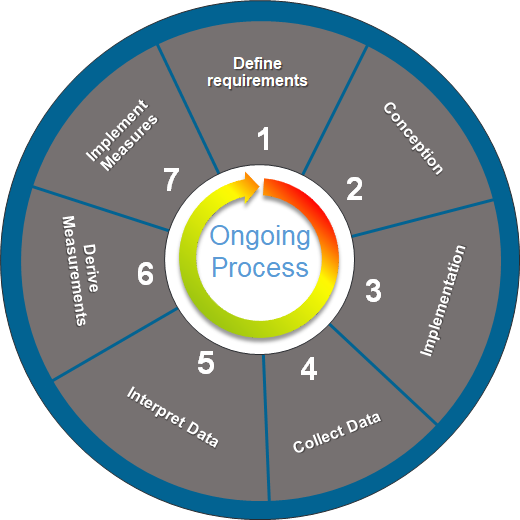
3 Responsibilities within the Company
We recommend having a central contact person that answers internal questions and serves as an interface to Mapp and other service providers. The contact person simplifies communication and facilitates ideal processes within the company.
